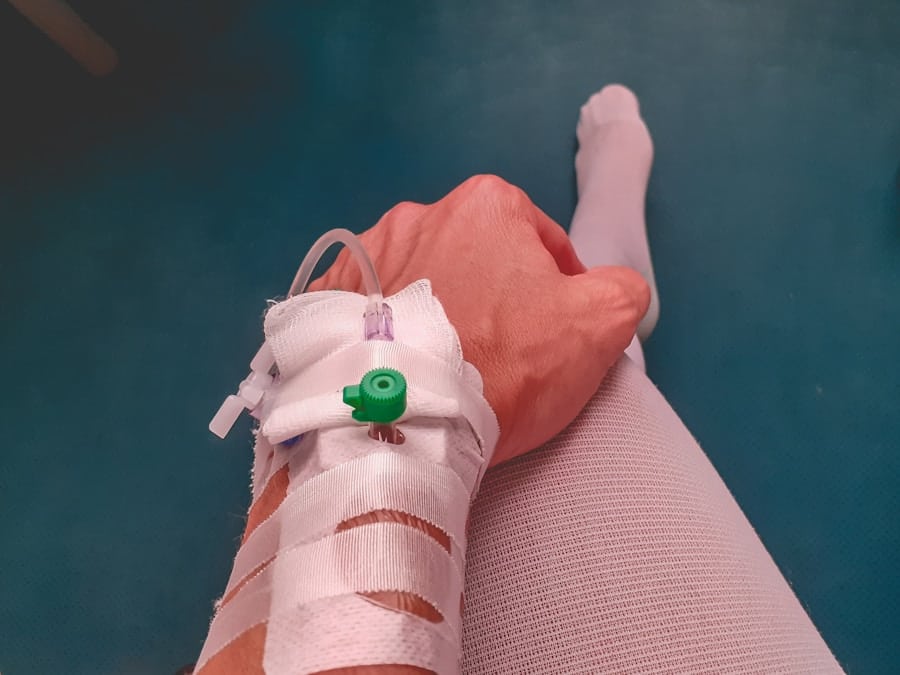The advent of artificial intelligence (AI) has revolutionized numerous sectors, and healthcare is no exception. Among the most promising applications of AI in this field is the development of AI-powered wearables. These devices, which can range from smartwatches to specialized medical sensors, are designed to monitor various health metrics in real-time, providing invaluable data that can enhance patient care.
The integration of AI into wearables allows for sophisticated data analysis, enabling healthcare providers to make informed decisions based on real-time insights. This technology is particularly transformative in the context of post-surgical recovery, where monitoring a patient’s progress is crucial for ensuring optimal outcomes. AI-powered wearables are equipped with advanced sensors that can track a multitude of physiological parameters, such as heart rate, temperature, and movement patterns.
By leveraging machine learning algorithms, these devices can analyze the collected data to identify trends and anomalies that may indicate complications or deviations from expected recovery trajectories. This capability not only empowers patients to take an active role in their recovery but also provides healthcare professionals with a wealth of information that can guide clinical decisions. As the healthcare landscape continues to evolve, the role of AI-powered wearables in post-surgical recovery is becoming increasingly significant, promising to enhance patient outcomes and streamline care processes.
Key Takeaways
- AI-powered wearables are revolutionizing post-surgical recovery by providing personalized and real-time monitoring and support.
- AI plays a crucial role in post-surgical recovery by analyzing data, providing insights, and offering personalized rehabilitation plans.
- Wearables equipped with AI technology enable continuous monitoring and tracking of recovery progress, allowing for early detection of complications.
- Personalized rehabilitation plans created by AI-powered wearables cater to the specific needs and progress of each individual patient.
- AI-powered wearables help prevent complications and risks by providing timely alerts and personalized recommendations for patients.
The Role of AI in Post-Surgical Recovery
AI plays a pivotal role in post-surgical recovery by facilitating continuous monitoring and analysis of a patient’s condition. After surgery, patients often face a myriad of challenges, including pain management, mobility issues, and the risk of complications such as infections or blood clots. AI-powered wearables can help mitigate these challenges by providing real-time feedback on vital signs and other health indicators.
For instance, a wearable device might alert healthcare providers if a patient’s heart rate spikes or if their temperature rises above a certain threshold, signaling potential complications that require immediate attention. Moreover, AI algorithms can analyze historical data from similar patients to predict recovery patterns and identify potential risks. This predictive capability allows healthcare providers to tailor their interventions more effectively.
For example, if a patient’s data suggests they are at a higher risk for developing a specific complication based on their unique profile, clinicians can implement preventive measures proactively. This not only enhances patient safety but also optimizes resource allocation within healthcare systems, ensuring that interventions are directed where they are most needed.
Monitoring and Tracking Recovery Progress
The ability to monitor and track recovery progress is one of the most significant advantages of AI-powered wearables in post-surgical care. Traditional methods of assessing recovery often rely on periodic check-ups and subjective patient reports, which can lead to gaps in data and delayed interventions.
This constant stream of information allows for a more nuanced understanding of a patient’s recovery journey. For example, a wearable device might track a patient’s mobility by measuring their steps or the range of motion in a joint following orthopedic surgery. By analyzing this data over time, healthcare providers can identify trends that indicate whether a patient is progressing as expected or if they are experiencing setbacks.
Additionally, some wearables come equipped with features that allow patients to log their pain levels or other symptoms directly into the device. This integration of subjective and objective data creates a comprehensive picture of recovery that can inform clinical decisions and enhance patient care.
Personalized Rehabilitation Plans
One of the most compelling aspects of AI-powered wearables is their ability to facilitate personalized rehabilitation plans tailored to individual patient needs. Each patient’s recovery journey is unique, influenced by factors such as age, pre-existing conditions, and the type of surgery performed. AI algorithms can analyze data from wearables to create customized rehabilitation protocols that optimize recovery outcomes.
For instance, if a wearable device indicates that a patient is struggling with mobility after knee surgery, the AI system can recommend specific exercises or adjustments to their rehabilitation plan. This level of personalization ensures that patients receive targeted interventions that address their specific challenges rather than relying on a one-size-fits-all approach. Furthermore, as patients progress through their recovery, the AI can continuously adapt their rehabilitation plan based on real-time data, ensuring that it remains relevant and effective throughout the healing process.
Preventing Complications and Risks
The integration of AI into wearable technology significantly enhances the ability to prevent complications and mitigate risks during post-surgical recovery. Complications such as infections, deep vein thrombosis (DVT), or unexpected changes in vital signs can have serious consequences if not addressed promptly. AI-powered wearables can play a crucial role in early detection by continuously monitoring key health indicators and alerting both patients and healthcare providers when abnormalities arise.
For example, some wearables are designed to monitor blood oxygen levels and heart rate variability—two critical indicators that can signal respiratory distress or cardiovascular issues. If a patient’s readings fall outside of established norms, the wearable can send an alert to both the patient and their healthcare team, prompting immediate evaluation and intervention. This proactive approach not only enhances patient safety but also reduces the likelihood of hospital readmissions due to preventable complications.
Improving Patient Compliance and Engagement
Patient compliance is often a significant barrier to successful post-surgical recovery. Many patients struggle to adhere to prescribed rehabilitation protocols or medication regimens due to forgetfulness or lack of motivation. AI-powered wearables can enhance patient engagement by providing reminders and feedback that encourage adherence to recovery plans.
For instance, a wearable device might send notifications to remind patients when it’s time to perform their exercises or take their medications. Additionally, these devices often come with user-friendly interfaces that allow patients to visualize their progress over time. Seeing tangible improvements—such as increased mobility or reduced pain levels—can motivate patients to stay committed to their rehabilitation efforts.
By fostering a sense of ownership over their recovery journey, AI-powered wearables empower patients to take an active role in their healing process, ultimately leading to better outcomes.
Enhancing Patient-Doctor Communication
Effective communication between patients and healthcare providers is essential for successful post-surgical recovery. However, traditional communication methods can be limited by time constraints and the availability of healthcare professionals. AI-powered wearables bridge this gap by facilitating seamless communication through real-time data sharing.
Healthcare providers can access patients’ health metrics remotely, allowing them to monitor progress without requiring frequent in-person visits. This continuous flow of information enables more informed discussions during follow-up appointments. For example, if a doctor notices concerning trends in a patient’s data—such as increased pain levels or decreased mobility—they can address these issues proactively during consultations.
Furthermore, some wearables allow for direct messaging between patients and providers, enabling patients to ask questions or report concerns without waiting for scheduled appointments. This enhanced communication fosters a collaborative approach to care that can significantly improve recovery outcomes.
Future Implications and Developments in AI-Powered Wearables for Post-Surgical Recovery
The future of AI-powered wearables in post-surgical recovery holds immense potential as technology continues to advance at an unprecedented pace.
Future developments may include more advanced sensors capable of monitoring additional physiological parameters or integrating with other health technologies such as telemedicine platforms.
Moreover, as data privacy concerns become increasingly prominent, future iterations of AI-powered wearables will need to prioritize secure data handling practices while still providing valuable insights for both patients and providers. The integration of blockchain technology could offer solutions for secure data sharing while maintaining patient confidentiality. As these devices become more widely adopted in clinical practice, we may also see shifts in healthcare policies that support the use of AI-powered wearables as standard tools for post-surgical care.
This could lead to improved reimbursement models for remote monitoring services and greater investment in research focused on optimizing wearable technology for diverse surgical populations. In conclusion, the integration of AI into wearable technology represents a transformative shift in post-surgical recovery practices. By enhancing monitoring capabilities, personalizing rehabilitation plans, preventing complications, improving patient engagement, and facilitating communication between patients and providers, these devices are poised to redefine how we approach recovery in the modern healthcare landscape.
As we look ahead, continued innovation in this field promises to further enhance patient outcomes and reshape the future of surgical care.
A related article to How AI-Powered Wearables Optimize Post-Surgical Recovery is What is the Difference Between a Graphic Tablet and a Drawing Tablet?. This article explores the distinctions between these two types of tablets, providing valuable information for individuals looking to invest in digital drawing tools. Just as AI-powered wearables are revolutionizing healthcare, understanding the differences between graphic and drawing tablets can help individuals make informed decisions about their creative tools.
FAQs
What are AI-powered wearables?
AI-powered wearables are devices that use artificial intelligence to collect and analyze data from the wearer. These devices can provide personalized insights and recommendations based on the data they collect, and are often used to monitor health and wellness.
How do AI-powered wearables optimize post-surgical recovery?
AI-powered wearables can optimize post-surgical recovery by monitoring the patient’s vital signs, activity levels, and other relevant data. The AI algorithms can then analyze this data to provide personalized recommendations for recovery, such as exercise routines, medication reminders, and lifestyle adjustments.
What are the benefits of using AI-powered wearables for post-surgical recovery?
Using AI-powered wearables for post-surgical recovery can provide several benefits, including personalized and real-time monitoring, early detection of complications, improved adherence to recovery plans, and better overall outcomes for patients.
Are AI-powered wearables safe to use for post-surgical recovery?
AI-powered wearables designed for post-surgical recovery are generally safe to use, as they are developed with strict regulations and guidelines in mind. However, it is important for patients to follow the recommendations of their healthcare providers and to use the devices as instructed.
How accessible are AI-powered wearables for post-surgical recovery?
AI-powered wearables for post-surgical recovery are becoming increasingly accessible, with many options available on the market. However, accessibility may vary depending on factors such as cost, availability in certain regions, and compatibility with existing healthcare systems.



